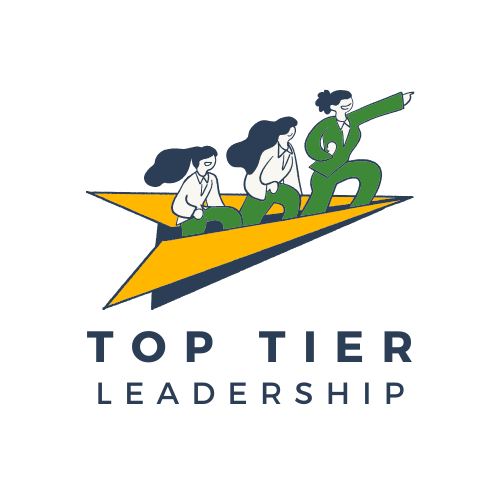Housekeeping departments face growing pressure to reduce costs while maintaining spotless standards that guests expect. Balancing efficiency with eco-friendly methods and staff well-being is key. Adopting technology, optimizing workflows, and investing in training can cut expenses significantly—without sacrificing quality. These smart strategies help hotels save money, improve employee retention, and meet rising demands for sustainable, high-quality service.
Practical Cost-Reduction Strategies for Housekeeping Departments in Hospitality
Efficient Operations and Cost Control
Implementing strategies such as tracking costs with KPIs like Cost Per Occupied Room (CPOR) and Minutes Per Room (MPR) enables precise identification of inefficiencies. Regular monitoring helps in making informed adjustments to workflows.
Also to read : Leveraging Blockchain Technology: A Guide for UK Startups to Boost Transparency in Business Operations
The importance of data-driven decision making becomes even more evident when optimizing staffing, scheduling, and inventory. Cross-training staff ensures flexibility during labor shortages, reducing overtime and replacement costs.
Utilizing smart technology such as housekeeping management software facilitates task scheduling, inventory control, and real-time communication among team members. Automated tools and energy-efficient appliances lower utility expenses, contributing to Housekeeping department money savings.
Adopting eco-friendly practices, such as linen reuse programs and sustainable cleaning products, not only appeals to environmentally conscious guests but also reduces expenses. Regular maintenance prevents costly repairs, enhancing operational longevity.
Core Techniques for Cost Savings in Housekeeping
Careful budgeting for housekeeping is foundational for cost reduction in hotel operations. Teams must integrate all relevant factors—equipment, labor, energy, and sustainable housekeeping methods—into comprehensive budgets. Leveraging budgeting for housekeeping tools tailored for seasonal cost management enables department heads to predict spikes in demand and adjust financial targets accordingly, supporting robust budget tracking for housekeeping. Reliable data from previous seasons guides goal-setting, amplifying the benefits of both benchmarking costs and forecasting.
Efficient Supply and Inventory Management
Smart efficient supply management is achieved by implementing inventory control techniques and bulk purchasing advantages, helping reduce waste and cut unnecessary procurement. Vendor negotiations for supplies, paired with automated inventory alerts, actively prevent overstocking and curb losses from product expiry—key tenets in any efficient supply management plan. This also supports efforts to minimize cleaning product waste through optimized chemical use and the transition to eco-friendly cleaning products cost benefits.
Labor Optimization and Staff Efficiency
Labor cost optimization in housekeeping hinges on cross-training cleaning staff for multi-tasking, optimizing staff scheduling efficiency, and improving staff productivity. Scheduling software benefits provide better labor forecasting and workload balancing, while technology use in housekeeping streamlines shift planning. These labor strategies reduce overtime expenses and increase operational flexibility.
Technology Adoption and Process Improvements
Adopting technology use in housekeeping—via software for housekeeping management and automated cleaning tools—enables better workflow improvements in housekeeping. This not only reduces labor demands but also aids in monitoring cleaning cycle optimization and energy saving practices for housekeeping. By automating routine tasks and tracking key performance indicators for housekeeping, departments achieve effective, sustainable, and measurable housekeeping cost reduction strategies.
Sustainable and Cost-Effective Practices
Promoting sustainable housekeeping methods can significantly support housekeeping cost reduction strategies. Linen and towel reuse programs enable efficient supply management and immediately reduce laundry expenses, which lowers both water and energy consumption. Choosing eco-friendly cleaning products provides cost benefits over traditional chemicals, minimizing cleaning product waste while also preventing chemical storage expenses and reducing supply theft or loss.
Effective waste management in housekeeping is essential for budgeting for housekeeping. Implementing waste reduction policies—such as recycling programs and using reusable cleaning materials—results in lean management in housekeeping and demonstrable cost reduction in hotel housekeeping. Reducing disposable product use further supports minimal inventory control techniques, allowing for more accurate forecasting and smoother housekeeping department cash flow management.
Energy and Water Conservation Strategies
Adopting energy saving practices for housekeeping is a pillar of modern cost saving. Start with energy efficient lighting in housekeeping areas and water conservation in housekeeping with low-flow fixtures. Conducting routine energy audits in housekeeping uncovers more cost-effective housekeeping equipment opportunities, streamlines preventive maintenance to lower costs, and supports training to reduce operational costs.
Outsourcing and External Solutions
When considering outsourcing housekeeping services benefits, focus on delegating specialized cleaning tasks to external providers. This can optimize cash flow, allow staff scheduling efficiency, and sometimes result in greater training programs for cost efficiency while keeping control over quality and service.
Process Optimization and Staff Engagement
Implement workflow improvements in housekeeping by introducing standardized cleaning protocols, checklists, and key performance indicators for housekeeping. Regular cost awareness training for staff fosters innovation and incentivizes efficient cleaning—fueling ongoing cost cutting without quality compromise.
Smart Strategies for Housekeeping Departments to Cut Costs
Efficient supply management and precise budget tracking for housekeeping form the backbone of sustainable housekeeping methods. Using data-driven housekeeping performance metrics—such as minutes per room and cost per occupied room—helps identify overspending and operational inefficiencies. Small workflow improvements in housekeeping, like optimizing cleaning routes or introducing cleaning cycle optimization, ensure that team efforts are tightly focused and effective.
Labor cost optimization in housekeeping demands smart scheduling and cross-training cleaning staff. With seasonal staffing adjustments and time management for cleaning staff, managers can reduce overtime expenses while keeping productivity high. Task prioritization methods, combined with proper training to reduce operational costs, foster high morale and prevent burnout, ultimately supporting staff retention to reduce hiring costs.
Minimizing cleaning product waste is achievable with inventory control techniques and vendor negotiations for supplies, which also support budgeting for housekeeping. Bulk purchasing advantages extend beyond cost savings, as they help lower supply theft or loss and simplify inventory tracking software use. Pairing these tactics with automated cleaning tools and investment in cost-effective housekeeping equipment enables smooth daily operations while securing cost reduction in hotel housekeeping.
A focus on eco-friendly cleaning products cost benefits and water conservation in housekeeping reduces environmental impact while keeping laundry expenses manageable for housekeeping departments.












